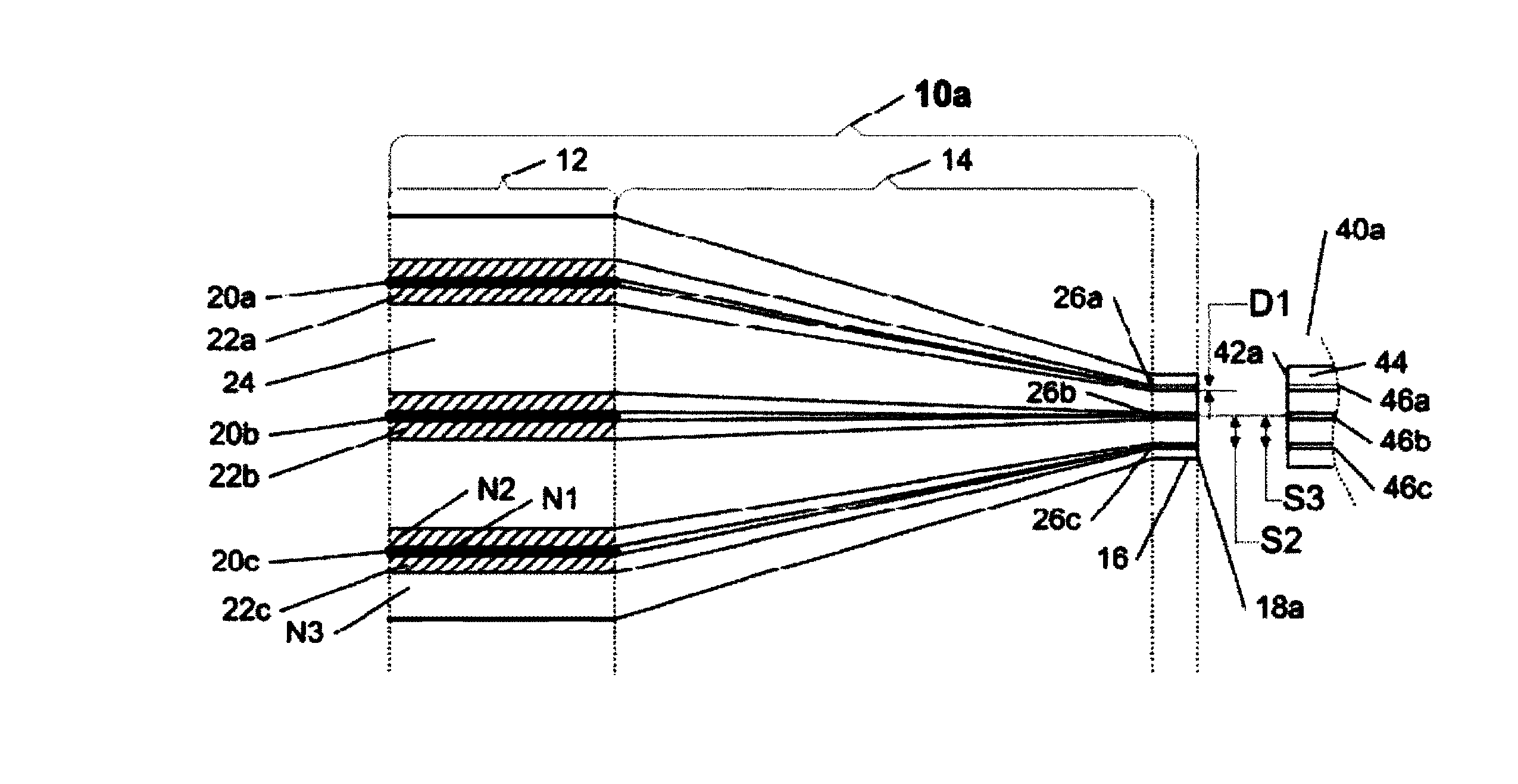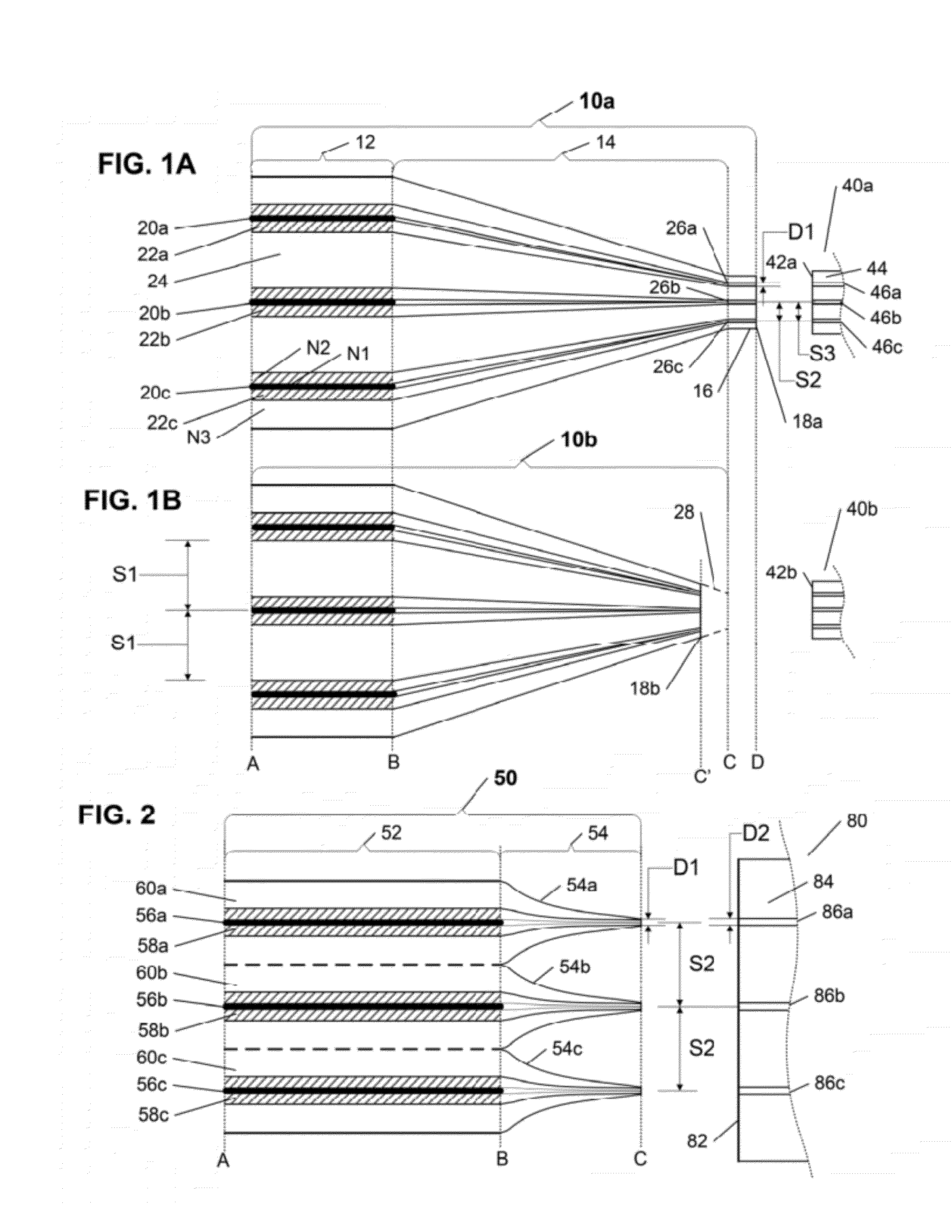Optical fiber coupler array
a coupler array and optical fiber technology, applied in the field ofcouplers, can solve the problems of increasing the insertion loss, reducing the coupling coefficient at each interface, and significant challenges in interfacing optical waveguide devices, and achieve the effects of low loss, high coupling coefficient, and maximizing coupling coefficien
- Summary
- Abstract
- Description
- Claims
- Application Information
AI Technical Summary
Benefits of technology
Problems solved by technology
Method used
Image
Examples
first embodiment
[0024]Referring now to FIG. 3, an optical fiber coupler array perform that may be utilized to fabricate the inventive optical fiber coupler array 10a, 10b of FIGS. 1A and 1B is shown, with plural inner cores 106a and outer cores 104a embedded in parallel within a single perform medium 102 (made from glass or polymer for example). By way of example, if the resulting optical coupler array is intended to be polarization maintaining, then, as is shown in cross section view CS-1, the outer cores 104a may have 180 degree cross-sectional symmetry (e.g. a rectangle cross-section). Otherwise as shown in view CS-2, the outer cores 104a may be conventional.
second embodiment
[0025]Referring now to FIGS. 4A and 4B, an exemplary optical fiber coupler array perform 100 that may be utilized to fabricate the inventive optical fiber coupler array 50 of FIG. 2 is shown. FIG. 4A shows a stage of initial preparation thereof, wherein a set of performs 150a-150d, each comprising an inner core 154a, and an outer core 156a surrounded by a medium 152a, are connected to one another in parallel to each (for example by being fused together). FIG. 4B, then shows a ready for use perform 200 comprising the four performs 150a-150d in a square cross-section configuration, which by way of further example is shown, in view CS-3, as having a square cross-section with polarization maintaining outer cores 156a. As noted above, this exemplary perform 200 may be used to fabricate an embodiment of the inventive coupler array which comprises a plurality of individually drawn high numerical aperture waveguide couplers (such as coupler array 50 of FIG. 2).
PUM
 Login to View More
Login to View More Abstract
Description
Claims
Application Information
 Login to View More
Login to View More - R&D
- Intellectual Property
- Life Sciences
- Materials
- Tech Scout
- Unparalleled Data Quality
- Higher Quality Content
- 60% Fewer Hallucinations
Browse by: Latest US Patents, China's latest patents, Technical Efficacy Thesaurus, Application Domain, Technology Topic, Popular Technical Reports.
© 2025 PatSnap. All rights reserved.Legal|Privacy policy|Modern Slavery Act Transparency Statement|Sitemap|About US| Contact US: help@patsnap.com



